
(Ker Gawl.) Haworth Supplementum Plantarum Succulentarum. 79, 1819
Herbarium; Herbarium; Herbarium; Herbarium; Herbarium; Herbarium; Herbarium; Herbarium; Herbarium; Herbarium; Herbarium; Herbarium (O. dillenii tehuantepecana); Herbarium; Herbarium; Painting (Britton and Rose, v1 1919, plate XXVIII, No. 2); Print (Botanical Register 1817, 3: plate 255)
O. dillenii has similarities with O. stricta, but the two are decidedly different.
See O. anahuacensis, another beach prickly pear
Original Citation
What is Opuntia dillenii?
Opuntia dillenii is a coastal prickly pear cactus of the southern Atlantic states, the Caribbean Islands, the Gulf Coast of Mexico, and northern South America. It may occur on the western side of the Florida peninsula. The authors have not observed in Texas.
Details
O. dillenii may reach 1 m tall but can reach 2 m in older groupings. Extensive stands sometimes make impenetrable thickets a meter or taller. Pads are often 10 × 16 cm but may be smaller or larger. The areoles have 1-5(10) yellow or brownish-yellow spines. Spines may be 2-4 cm long. Areoles are generally raised above the cladode surface creating a dimpled look, and pads are quite often scalloped. Scalloped and dimpled cladodes with ample spines create a distinctive appearance in this Opuntia.
Yellow flowers produce reddish-purple fruits. The style is pale and the stigma is yellow. Filaments are yellow-green or green. Fruits are oval or spherical with pronounced, almost stipe-like necks. The umbilicus is moderately shallow. Areoles are clustered towards the top of the fruit.
O. dillenii is tetraploid, but other ploides have been reported suggesting the taxon is variable or that there may be two or more similar taxa.
Other Notes
See a table comparing/contrasting O. dillenii and O. stricta.
There are several considerations for telling O. dillenii apart from O. stricta. O. dilleinii has leaves on the newly formed or forming pads are re-curved and not ascending. O. dillenii has flower buds are pointed or cone-shaped and not rounded at the top i.e., not domed-shaped. The spines of O. dillenii are pure yellow-translucent and often curved a bit. Generally the edges of pads are undulated or scalloped. Flower bud and leaf morphology are most telling.
This prickly pear has spread to other continents including South America, Africa, Australia, and Asia where it can be an invasive plant that disrupts pastures, croplands, and natural habitats. The species is often confused with O. stricta, and this has obscured its actual current and former distribution. One reason for its weediness may be its ability to grow in various habitats including disturbed areas such as roadsides and pastures even though it is considered a coastal species. It also tolerates a variety of soils.
Some botanists treat O. dillenii as a variety of O. stricta, and some treatments don’t even recognize it. Both plants may grow in similar habitats, but they are dissimilar. One important difference is that O. dillenii generally has pads with undulate edges. Additionally, O. dillenii is often a much spinier Opuntia than O. stricta. O. zebrina of southern FL may be a form of O. dillenii.
O. dillenii is an interesting garden plant, but it must be pruned to keep it in check in smaller gardens. It is a rampant grower in warm areas.
Article: O. dillenii, an Interesting and Promising Taxon

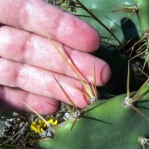
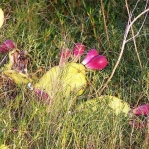
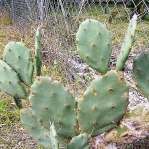
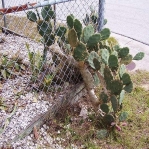
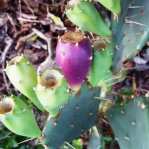
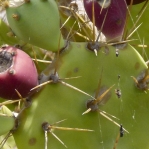
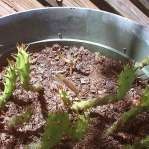
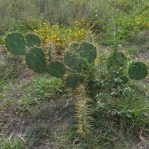
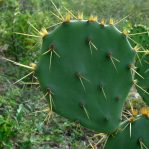
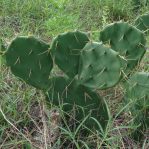
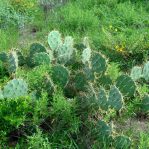
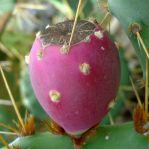
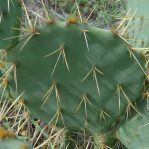
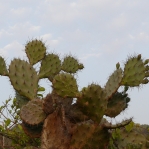
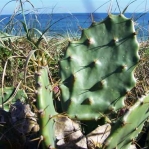
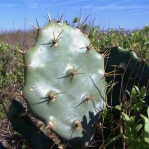
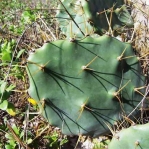
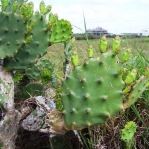
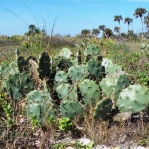
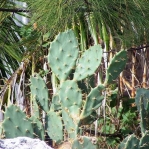
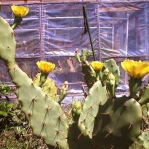
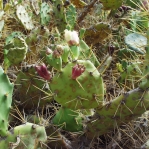
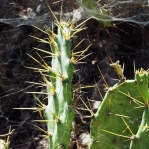
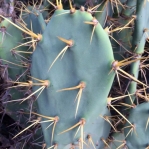
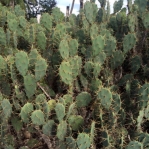
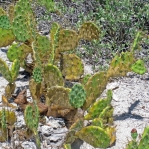
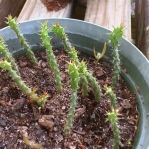
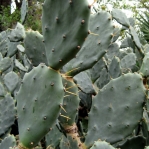
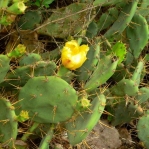
can you cook the opuntia dilleni pads?
I think O. dillenii pads are edible, not sure. I don’t know if they taste good. Always be sure to collect them early, before the spines develop and be sure to remove any small spines and glochids.